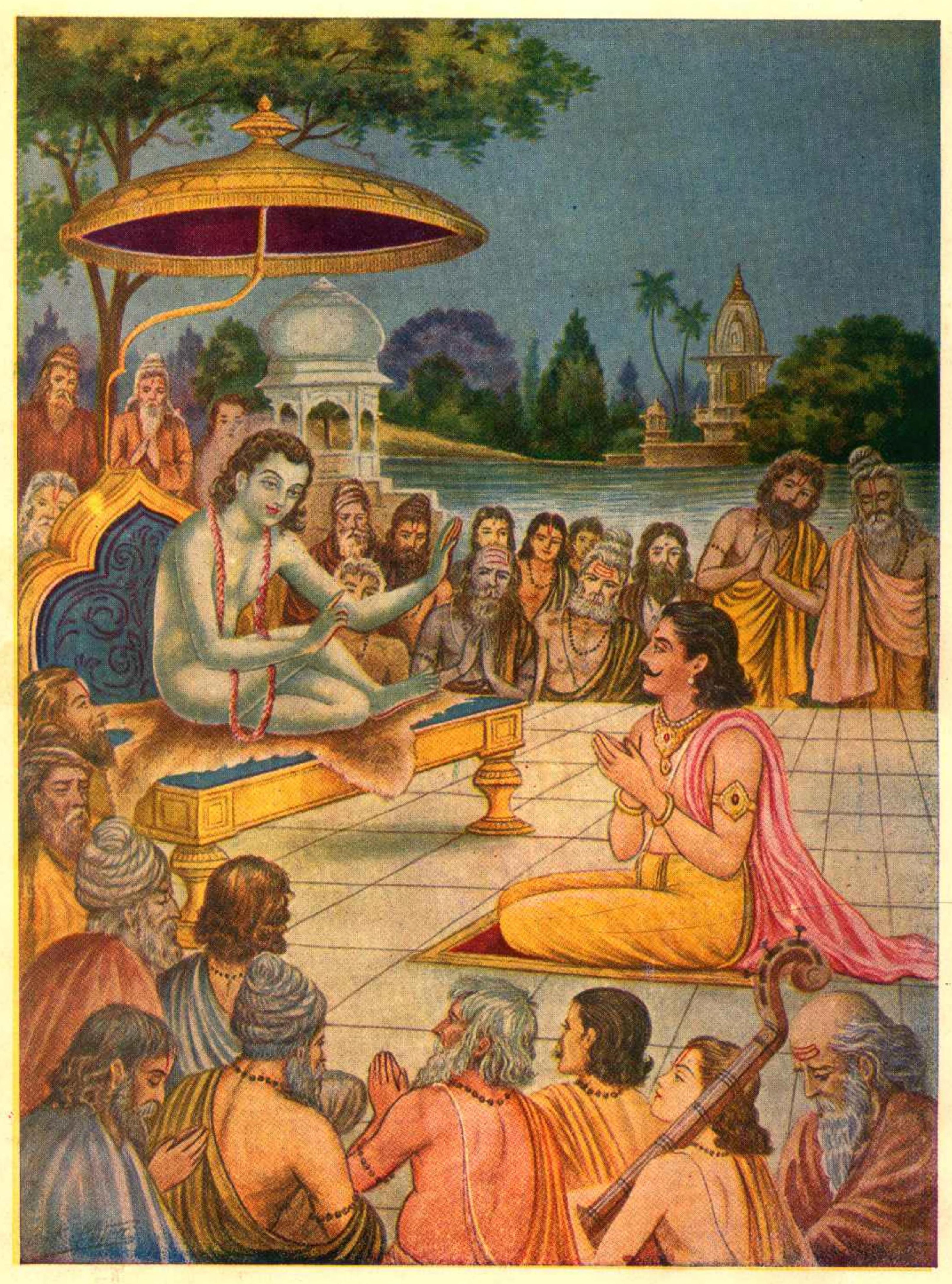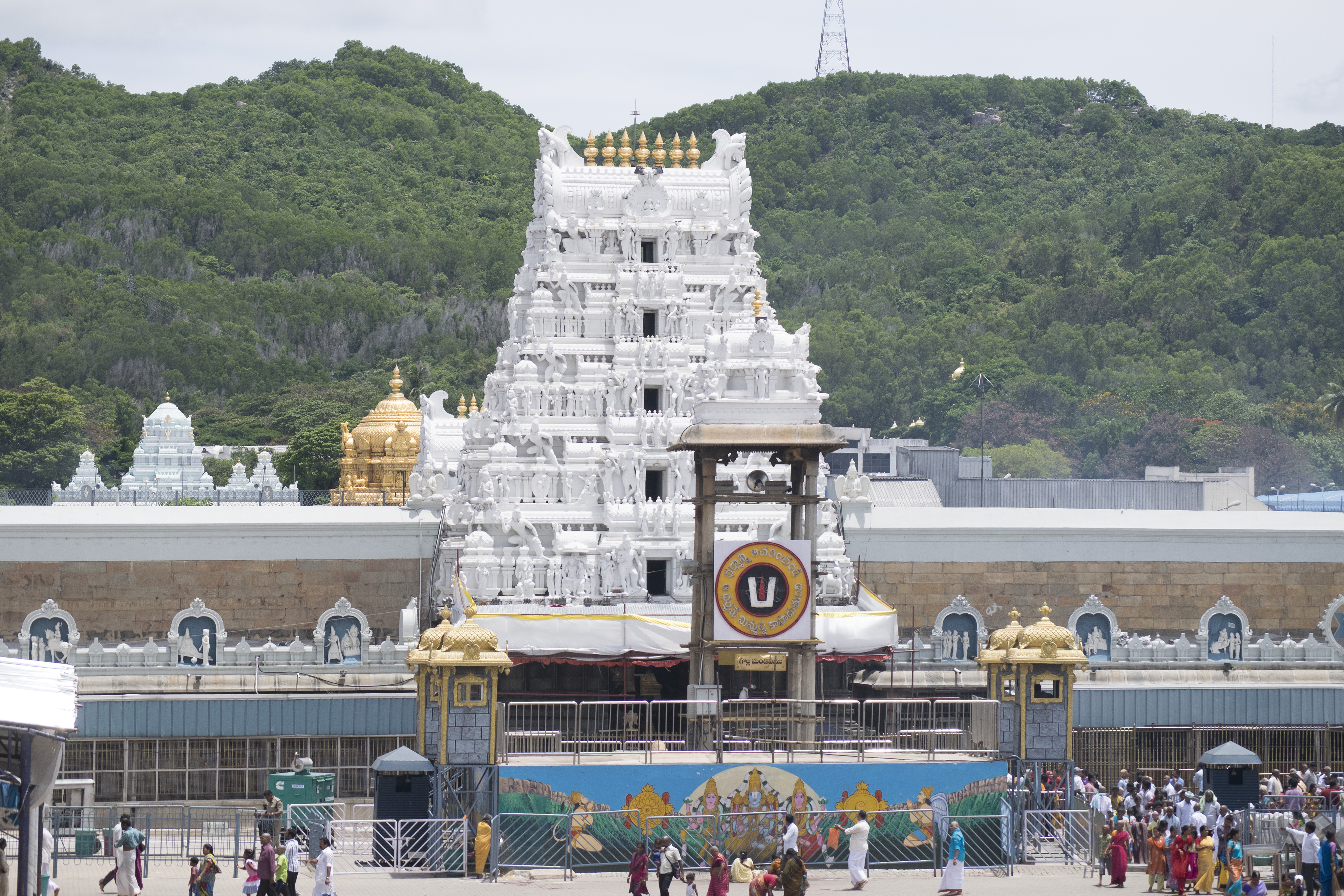|
Sudhindra Tirtha
Sudhindra Tirtha (1596 - 1623) was a Dvaita philosopher of aesthetics, dramatist and the pontiff of the matha at Kumbakonam. Unlike his predecessors who mainly dealt with polemics and theology, most of his written works deal with Kavya (''poetry''), Alankara (''figure of speech'') and Nataka (''drama''), which is considered unique in history of Dvaita literature. He is also notable as a disciple of Vijayendra Tirtha, engaging in scholarly debates across the subcontinent and for mentoring Raghavendra Tirtha who succeeded him as the pontiff of the matha at Kumbakonam. Regarding his oeuvre in the context of Dvaita literature, Sharma notes "he was left us works of real merit, which stand out like oases in the dreary desert of theological writings". His works are characterised by alliterations, elegance and simplicity. Life Information about his life mainly comes from ''Raghavendra Vijaya'' by Narayanacharya. Nothing is known about his early life. He served as a disciple of ... [...More Info...] [...Related Items...] OR: [Wikipedia] [Google] [Baidu] |
Kashi Math
Kashi Math is a matha (monastery) and a spiritual organisation followed by the Madhva section of Gaud Saraswat Brahmins, who are also referred as Madhwa Saraswat Brahmins or Vaishnava Saraswat Brahmins. It dates back to the 16th century. With its headquarters in Brahma Ghat, Varanasi. Kashi Math has followers all over the Konkan belt, prominently in Mumbai, Goa, Udupi, Mangalore, Kochi and other parts of Karnataka and Kerala. Deities The principal deities of Kashi Math are ''charaprathishta'' ("moving installation") idols of Vyasa, Rama and Narasimha, who are also collectively known as the ''Vyasa Raghupathi Narasimha''. Gurus The Kashi Math follows the Guru-shishya tradition where the Guru of the Math initiates a ''shishya'' to succeed him upon his Samadhi. Samyamindra Thirtha is the 21st and current head (Mathadipathi) of the Math. The heads have been: #Yadavendra Thirtha -I #Keshavendra Thirtha #Upendra Thirtha -I #Yadavendra Thirtha -II #Raghavendra Thirtha #Devend ... [...More Info...] [...Related Items...] OR: [Wikipedia] [Google] [Baidu] |
Raghunatha Nayaka
Raghunatha Nayak was the most powerful king of the Thanjavur Nayak Dynasty. He was the third ruler of Thanjavur, southern India, from the Nayak dynasty. He belongs to Balija caste. He ruled from 1600 to 1634 and is noted for the attainments of Thanjavur in literature, art, and Carnatic music. Early life Raghunatha Nayak was the eldest son of Achuthappa Nayak and was born after intense penance by his father. The '' Raghunathabhyudayam'' and ''Sahityanatyakara'' give a detailed account of his childhood. As a boy, Raghunatha learned the shastras, the art of warfare and administration. He had multiple queens, chiefly Kalavati referred to in the ''Raghunathabhyudayam'' as Pattampurani. Ramabhadramba, who wrote a history of the Thanjavur Nayak dynasty, was one of his concubines. Wars With Golconda Sultanate In his early days, Raghunatha won acclaim fighting the Golconda Sultanate. He ascended the throne in 1600, ruled with his father from 1600 to 1614, and as sole monarch from 1 ... [...More Info...] [...Related Items...] OR: [Wikipedia] [Google] [Baidu] |
Madhva Religious Leaders
Madhvacharya (; ; 1199–1278 CE or 1238–1317 CE), also known as Purna Prajna () and Ānanda Tīrtha, was an Indian philosopher, theologian and the chief proponent of the ''Dvaita'' (dualism) school of Vedanta. Madhva called his philosophy '' Tattvavāda'' meaning "arguments from a realist viewpoint". Madhvacharya was born at Pajaka near Udupi on the west coast of Karnataka state in 13th-century India. As a teenager, he became a Sanyasi (monk) joining Brahma-sampradaya guru Achyutapreksha, of the Ekadandi order. Madhva studied the classics of Hindu philosophy, and wrote commentaries on the Principal Upanishads, the ''Bhagavad Gita'' and the Brahma Sutras ('' Prasthanatrayi''), and is credited with thirty seven works in Sanskrit. His writing style was of extreme brevity and condensed expression. His greatest work is considered to be the '' Anuvyakhyana'', a philosophical supplement to his bhasya on the Brahma Sutras composed with a poetic structure. In some of his works, h ... [...More Info...] [...Related Items...] OR: [Wikipedia] [Google] [Baidu] |
Dvaita Vedanta
Dvaita Vedanta (); (originally known as Tattvavada; IAST: ''Tattvavāda''), is a sub-school in the Vedanta tradition of Hindu philosophy. The term Tattvavada literally means "arguments from a realist viewpoint". The Tattvavada (Dvaita) Vedanta sub-school was founded by the 13th-century Indian philosopher-saint Madhvacharya. Madhvacharya believed in three entities: God, ''jiva'' (soul), and '' jada'' (''maya'', matter). The Dvaita Vedanta school believes that God and the individual souls ( jīvātman) exist as distinct realities, and these are dependent, being said that Vishnu (Narayana) is independent (''svatantra''), and Souls are dependent (''paratantra'') on him. The Dvaita school contrasts with the other two major sub-schools of Vedanta, the Advaita Vedanta of Adi Shankara which posits nondualism—that ultimate reality (Brahman) and human soul ( Ātman) are identical and all reality is interconnected oneness, and Vishishtadvaita of Ramanuja which posits qualified non ... [...More Info...] [...Related Items...] OR: [Wikipedia] [Google] [Baidu] |
Smartha
The ''Smarta'' tradition (, ) is a movement in Hinduism that developed and expanded with the Puranas genre of literature. It reflects a synthesis of four philosophical strands, namely Uttara Mīmāṃsā, Advaita, Yoga, and theism. The Smarta tradition rejects theistic sectarianism, and is notable for the domestic worship of five shrines with five deities, all treated as equal – Ganesha, Shiva, Shakti, Vishnu and Surya. The Smarta tradition contrasted with the older Shrauta tradition, which was based on elaborate rituals and rites. There has been a considerable overlap in the ideas and practices of the Smarta tradition with other significant historic movements within Hinduism, namely Shaivism, Brahmanism, Vaishnavism, and Shaktism.Sanderson, Alexis. "The Saiva Age: The Rise And Dominance Of Saivism During The Early Medieval Period". In ''Genesis And Development of Tantrism'', Edited By Shingo Einoo. Tokyo: Institute Of Oriental Culture, University Of Tokyo, 2009. Institute ... [...More Info...] [...Related Items...] OR: [Wikipedia] [Google] [Baidu] |
Rasa (aesthetics)
In Indian aesthetics, a rasa () literally means "juice, essence or taste".Monier Monier-Williams (1899)Rasa Sanskrit English Dictionary with Etymology, Motilal Banarsidass (Originally Published: Oxford) It is a concept in Indian arts denoting the aesthetic flavour of any visual, literary or musical work that evokes an indescribable feeling in the reader or audience.Rasa: Indian Aesthetic Theory Encyclopedia Britannica (2013) It refers to the emotional flavors/essence crafted into the work by the writer or a performer and relished by a 'sensitive spectator' or ''sahṛdaya,'' literally one who "has heart", and can connect to the work with emotion, without dryness. Rasas are created by one's bhava (one's state of mind). The ''rasa'' theory has a dedicated section (Chapter 6) in the Sanskrit text ''Natya Shastra'', an ancient te ... [...More Info...] [...Related Items...] OR: [Wikipedia] [Google] [Baidu] |
Indian Aesthetics
Indian art evolved with an emphasis on inducing special spiritual or philosophical states in the audience, or with representing them symbolically. Rasas in the performing arts The theory of rasa (aesthetics), rasas still forms the aesthetics, aesthetic underpinning of all Indian classical dance and theatre, such as Bharatanatyam, kathak, Kuchipudi, Odissi, Manipuri dance, Manipuri, Kudiyattam, Kathakali and others. Expressing ''rasa'' in classical Indian dance form is referred to as ''rasa-abhinaya''. The ''Nātyasāstra'' carefully delineates the ''Bhāva (Hinduism), bhavas'' used to create each ''rasa''. The expressions used in Kudiyattam or Kathakali are extremely exaggerated theatrical expressions. The opposite of this interpretation is Balasaraswathi's school of subtle and understated abhinaya of the devadasis. There were serious public debates when Balasaraswathi condemned Rukmini Devi's puritanistic interpretations and applications of Sringara rasa. The abhinaya of th ... [...More Info...] [...Related Items...] OR: [Wikipedia] [Google] [Baidu] |
Bhagavata Purana
The ''Bhagavata Purana'' (; ), also known as the ''Srimad Bhagavatam (Śrīmad Bhāgavatam)'', ''Srimad Bhagavata Mahapurana'' () or simply ''Bhagavata (Bhāgavata)'', is one of Hinduism's eighteen major Puranas (''Mahapuranas'') and one of the most popular in Vaishnavism. Composed in Sanskrit and traditionally attributed to Veda Vyasa, it promotes '' bhakti'' (devotion) towards Krishna, an avatar of Vishnu, integrating themes from the Advaita (monism) philosophy of Adi Shankara, the Vishishtadvaita (qualified monism) of Ramanujacharya and the Dvaita (dualism) of Madhvacharya. It is widely available in almost all Indian languages. The ''Bhagavata Purana'', like other puranas, discusses a wide range of topics including cosmology, astronomy, genealogy, geography, legend, music, dance, yoga and culture. As it begins, the forces of evil have won a war between the benevolent '' devas'' (deities) and evil '' asuras'' (demons) and now rule the universe. Truth re-emerges as ... [...More Info...] [...Related Items...] OR: [Wikipedia] [Google] [Baidu] |
Vyasatirtha
Vyāsatīrtha (), also called ''Vyasaraja'' or ''Chandrikacharya'', was a Hindu philosopher, scholar, polemicist, commentator and poet belonging to the Madhwacharya's Dvaita order of Vedanta. As the rajaguru of Vijayanagara Empire, Vyasatirtha was at the forefront of a golden age in Dvaita which saw new developments in dialectical thought, growth of the Haridasa literature under bards like Purandara Dasa and Kanaka Dasa and an increased spread of Dvaita across the subcontinent. He himself composed many kīrtanas in Kannada and Sanskrit. Three of his polemically themed doxographical works ''Nyayamruta'', ''Tatparya Chandrika'' and ''Tarka Tandava'' (collectively called ''Vyasa Traya'') documented and critiqued an encyclopaedic range of sub-philosophies in Advaita, Visistadvaita, Mahayana Buddhism, Mimamsa and Nyaya, revealing internal contradictions and fallacies. His ''Nyayamruta'' caused a stir in the Advaita community across the country requiring a rebuttal by M ... [...More Info...] [...Related Items...] OR: [Wikipedia] [Google] [Baidu] |
Hampi
Hampi or Hampe (), also referred to as the Group of Monuments at Hampi, is a UNESCO World Heritage Site located in the town of Hampi in Vijayanagara district, east-central Karnataka, India. Hampi predates the Vijayanagara Empire; it is mentioned in the ''Ramayana'' and the Puranas of Hinduism as Pampa Devi Tirtha Kshetra. Hampi continues as a religious centre, with the Virupaksha Temple, an active Adi Shankara-linked monastery and various monuments belonging to the old city. Hampi was the capital of the Vijayanagara Empire from 1336 to 1565 (as Vijayanagara), when it was abandoned. It was a fortified city. Chronicles left by Persian and European travellers, particularly the Portuguese, say that Hampi was a prosperous, wealthy and grand city near the Tungabhadra River, with numerous temples, farms and trading markets. Hampi-Vijayanagara is estimated to be the world's second-largest city by 1500, after Beijing, and probably India's richest at that time, attracting traders f ... [...More Info...] [...Related Items...] OR: [Wikipedia] [Google] [Baidu] |
Sannyasa
''Sannyasa'' (), sometimes spelled ''sanyasa'', is the fourth stage within the Hinduism, Hindu system of four life stages known as ''ashrama (stage), ashramas'', the first three being ''brahmacharya'' (celibate student), ''Gṛhastha, grihastha'' (householder) and ''Vānaprastha, vanaprastha'' (forest dweller, retired). ''Sannyasa'' is traditionally conceptualized for men or women in the last years of their life, but young ''brahmachari''s have the choice to skip the householder and retirement stages, renounce worldly and materialistic pursuits and dedicate their lives to spiritual pursuits. ''Sannyasa'', a form of asceticism marked by renunciation of material desires and prejudices, is characterized by a state of disinterest in and detachment from material life, with the purpose of spending one's life in peaceful, spiritual pursuits. An individual in Sanyasa is known as a ''sannyasi'' (male) or ''sannyasini'' (female) in Hinduism. Sannyasa shares similarities with the Sadhu a ... [...More Info...] [...Related Items...] OR: [Wikipedia] [Google] [Baidu] |



